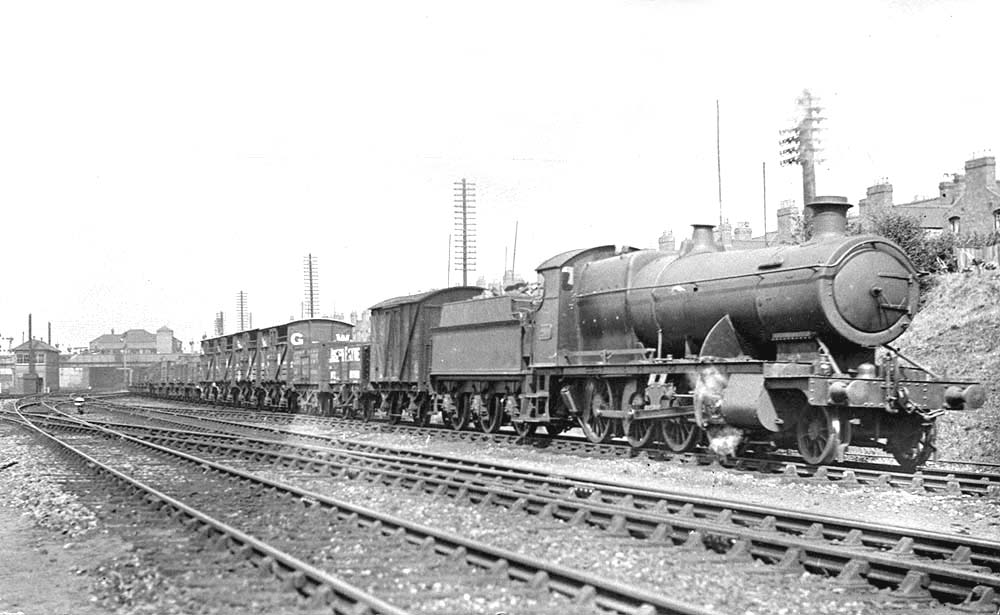|
|
 |
 |
|
GWR Route: Banbury to Wolverhampton
GWR Route: North Warwickshire Line
Tyseley Shed: gwrt2401
 |
GWR 2-8-0 28xx Class No 2800 is seen leaving Tyseley station
at the head of an up goods train. Built as GWR No 97 by Swindon works in June
1903, No 2800 was renumbered as such in December 1912 and was to remain in
service until April 1958 when it was withdrawn from 86A Ebbw Junction shed in
Newport. The locomotive was the founder member of this class, the first 2-8-0
locomotives built in Britain, and after evaluation construction of the
production series commenced in 1905 and continued until 1919. The 2884 Class
which appeared in 1938 to 1942 was developed from the 28xx class and is
sometimes classified with it. No 97 undertook two years of trials before going
into production. Initial results suggested that only the front end needed
further development. Initially the boiler pressure of the 2-8-0 was set at 200
lbf/in² with 18 inch diameter cylinders. Tractive effort started out at
29,775 lbf/in² but was increased substantially in the production engines
by enlarging the cylinder diameter to 18½ inch and raising the steam
pressure to 225 lbf/in². The 8½ inch piston valves were enlarged to
10 inches.
The most visible difference between No 97 and the first of
the 1905 production batch was the higher pitch of the boiler (8 foot 2 inches
against 7 foot 8½ inches. At first the prototype was given a 4,000
gallon tender but almost without exception the 28xxs were harnessed to the
3,500 gallon variety throughout their working lives. Superheating was
incorporated into the class from 1909 with No 2808 the first to be retrofitted.
Other modifications centred on improving the weight distribution, altering
smokebox lengths and fitting larger diameter chimneys. The 84 28xxs built by
Churchward remained the GWR's principal long haul freight engines throughout
the 1920s and 1930s. The only serious problem met with in traffic was with the
sealing of the internal steam pipes. Beginning in 1934 most of the class had
them replaced with the outside kind.
Photographer Henry L Salmon
 back back

|
|
|
